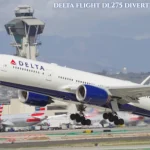Time is the ultimate currency in the logistics and retail industries, and meeting delivery deadlines can make or break customer satisfaction. At the core of efficient delivery operations lies a critical but often underestimated element: driving directions for multiple stops. Whether you’re understanding a complex supply chain or orchestrating last-mile deliveries, the precision of your route planning directly impacts timeliness, cost efficiency, and operational success.
When businesses fail to account for real-time traffic conditions, suboptimal routes, or evolving customer demands, they risk delays, increased expenses, and dissatisfied customers. This blog explores the challenges of managing driving directions for multiple stops and provides actionable solutions to ensure timely and efficient deliveries.
Common Hurdles in Multi-stop Route Planning
Some of the most common hurdles in meeting delivery deadlines are:
Complex Route Planning
Coordinating multiple deliveries requires more than plotting points on a map. Factors such as traffic congestion, road closures, and varying stop priorities complicate the process. Without precise tools, businesses often resort to manual planning, leading to inefficiencies.
A poorly planned route can result in excessive mileage, wasted fuel, and extended delivery windows.
Dynamic Changes in Traffic and Weather
Real-time conditions such as traffic jams, road accidents, and unexpected weather changes can derail even the most well-planned routes. Without dynamic rerouting capabilities, drivers face delays that can affect the entire delivery schedule.
Delivery delays frustrate customers and damage trust, especially when accurate ETAs cannot be provided.
Customer Expectations
Today’s customers demand accurate ETAs, real-time tracking, and on-time deliveries. Failure to meet these expectations can result in negative reviews and a loss of repeat business.
Delayed delivery to a critical customer may cost more than just reputation; it could lead to a loss of lifetime value.
Inefficient Resource Utilization
Optimizing driving directions for multiple stops isn’t just about time; it’s also about resource management. Suboptimal routes can lead to wasted driver hours, higher vehicle wear and tear, and increased fuel costs.
A poorly allocated fleet can lead to idle vehicles and overstressed drivers, reducing overall productivity.
Lack of Integration with Real-time Data
Outdated routing systems fail to leverage real-time data, such as live traffic updates or changes in delivery priorities. This gap results in rigid schedules that cannot adapt to dynamic conditions.
Without real-time adaptability, businesses miss opportunities to optimize routes and minimize delays.
Solutions for Precision in Driving Directions for Multiple Stops
Here’s how you can ensure precision in driving directions for multiple stops:
Advanced Route Optimization Tools
Modern route planners leverage algorithms to create the most efficient driving directions for multiple stops by factoring in variables like traffic, delivery priorities, and vehicle capacities. These tools eliminate manual planning errors and save time.
Implementation: Invest in software that uses AI and machine learning to predict the best routes based on historical and real-time data.
Result: Businesses experience reduced mileage, lower fuel costs, and faster deliveries.
Dynamic Rerouting Capabilities
Integrating real-time traffic and weather updates ensures drivers can adapt their routes on the fly. This flexibility allows businesses to manage unforeseen disruptions and maintain delivery schedules.
Implementation: Use tools that provide live traffic feeds and automatic rerouting to avoid congestion and roadblocks.
Result: Increased on-time delivery rates and fewer delays.
Multi-stop Planning Features
Efficient tools for driving directions for multiple stops allow businesses to input multiple destinations and optimize the sequence for minimal travel time. This capability is especially critical for industries with dense delivery networks.
Implementation: Utilize route planners that support multi-stop scheduling and can handle complex delivery patterns.
Result: Streamlined operations, fewer detours, and better use of driver time.
Enhanced Communication with Customers
Accurate ETAs, real-time updates, and proactive communication foster trust and improve the customer experience. Transparent delivery tracking ensures that customers remain informed and satisfied.
Implementation: Offer customers live tracking options and regular notifications about delivery progress.
Result: Higher customer satisfaction and loyalty.
Data-driven Insights
Route planning tools with analytics features provide valuable insights into delivery performance, enabling businesses to identify inefficiencies and optimize future operations.
Implementation: Use data from previous deliveries to refine routes, allocate resources better, and identify areas for improvement.
Result: Continuous improvement in efficiency and reduced operational costs.
Fleet and Resource Allocation Optimization
Assigning the right vehicles and drivers to specific routes based on capacity, load, and delivery priorities is critical for efficient operations.
Implementation: Leverage software that matches delivery requirements with fleet capabilities.
Result: Minimized idle time, optimal vehicle usage, and improved driver productivity.
Territory Planning Improves Delivery Times
Efficient territory planning is essential for minimizing travel distances and optimizing delivery routes.
Implementation: Use route optimization software to analyze historical data, define optimal service areas, and balance workloads among teams. Incorporate geofencing and geocoding to track deliveries in real-time and ensure accurate delivery locations.
Result: Improved workload distribution, cost savings, reduced travel time, and enhanced delivery efficiency across territories.
Staying Ahead with Solutions for Dynamic Deliveries
Precision defines success, and mastering driving directions for multiple stops is essential for businesses aiming to meet delivery deadlines consistently. By addressing challenges such as real-time traffic changes, customer expectations, and resource allocation, businesses can unlock unparalleled efficiency and reliability in their operations.
Adopting advanced route planning tools offered by technology providers like FarEye enables organizations to streamline operations, optimize costs, and enhance the customer experience. As the logistics and retail sectors continue to evolve, leveraging cutting-edge technology is no longer optional, it’s a strategic imperative. With solutions tailored to dynamic delivery needs, businesses can stay ahead of the curve and secure their position as industry leaders.







